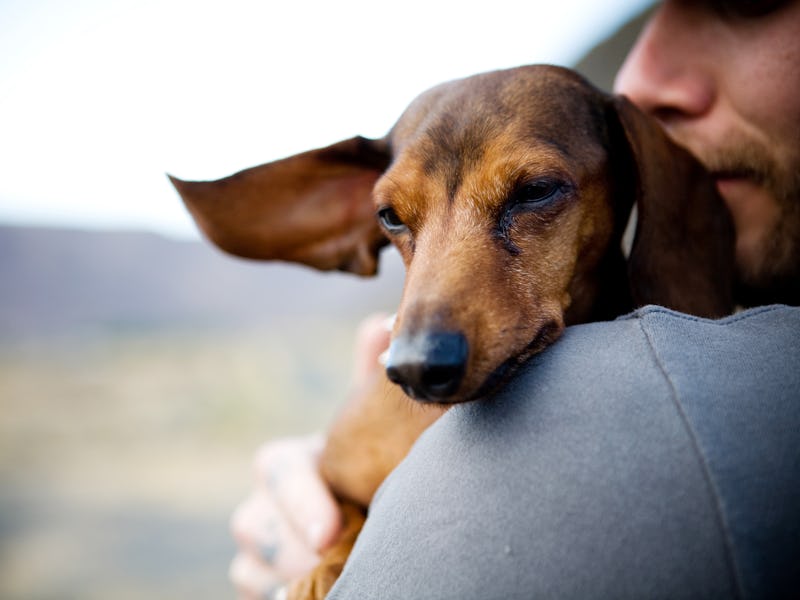Why can’t I understand my dog? Recent research may offer an answer
A new study suggests you may not know Fido as well as you think.

Dogs may be man’s best friend — but do we actually understand them?
Recent research published last month in the journal PLOS ONE suggests that we may be overestimating our ability to interpret our dogs — at least in one arena.
What they found — The researchers analyzed our ability to accurately interpret neutral, playful, and aggressive social interactions from primates, dogs, and other humans. Participants viewed video clips of each behavior and then determined the likely outcome of that interaction.
Humans could predict outcomes accurately when it came to dogs’ playful or neutral actions. But they were pretty bad when it came to interpreting pups’ aggressive behavior, predicting the outcome “significantly below chance level.”
“Importantly, participants performed particularly poorly when assessing aggressive behavior for dogs,” write the study authors.
Why are humans bad at understanding dogs?
The friendly way humans greet dogs — by thrusting a hand in the direction of their face or eyes — can actually be threatening to the animal.
Crucially, humans are very good at interpreting playful or neutral dog behavior, which may have something to do with their domestication being inextricably linked to human companionship.
“Play is easy to recognize: the play face from a dog is not so different from play faces in other species, including humans,” Juliane Bräuer, a co-author of the study, tells Inverse. Bräuer is a researcher in comparative psychology and animal cognition at the Max Planck Institute.
But this study adds to a growing body of research finding humans are bad at understanding their dogs. A 2018 paper found that 53 percent of three-year-olds misinterpreted growling or snarling as happy behavior, but this new PLOS ONE research demonstrates adult humans are also poor judges of a dog’s aggression. Bräuer explains the clips the researchers presented focused on more subtle body language — such as a threatened dog defending an object — rather than obvious aggression.
“It is also more subtle than people might think, but humans might simply expect dogs to be friendly,” Bräuer says.
But misinterpreting dog behavior can have serious ramifications, leading to violent encounters like dog bites.
“Misidentifying the subtle cues from those nervous or under-socialized dogs can lead to them giving a more obvious response or even a bite,” Liz Dimit, franchise trainer and dog expert for pet daycare company, Dogtopia, tells Inverse.
Dimit says that the way humans often greet dogs — such as putting their hands near a dog’s face or eyes — might appear friendly to humans but can feel threatening to pooches. Most dogs become desensitized to this behavior, but there are some that react poorly to direct eye contact or shy away from strangers.
Can you get better at understanding your dog?
To get better at understanding your dog, you should seek professional guidance and training from a licensed animal/veterinary behaviorist or dog trainer. Simply spending time around dogs does not necessarily make you better equipped to understand their social cues.
“In our previous study, we found that dog owners were not better than non-owners, but primate experts performed better on primate interactions than other people,” Bräuer says.
You can set your dog up for positive interactions and prevent them from feeling overwhelmed by exposing them to new environments “as early and as often as possible,” Dimit adds.
How can you tell if a dog is upset?
A smiling dog may not always be a happy one, experts say. Combined with other body language cues, smiling could indicate your pup is stressed.
“Pet parents should learn to read their dogs and understand when they are alerted, stressed or anxious,” Dimit says.
It’s no surprise that animal experts are better at interpreting their social behavior, but you can help minimize your pup’s aggression by learning a few key body language cues.
Stress signs
- Panting
- Shaking
- Avoiding eye contact
- Smiling
“Smiling is the most common misidentified sign, it is not typically a happy sign in dogs but rather indicates stress,” Dimit explains.
Signs of anxiety
- Hiding behind other dogs or humans
- Tucked tail
- Ears pinned back
Pay attention to your dog’s body posture and eyes. A dog with a loose body and soft, welcoming eyes is a happy pup. Hard and intensive gazing eyes and a stiff, unmoving body indicate the dog may be veering into aggression.
Bites typically happen dogs display one of the warning signs above, but the human ignores or misinterprets this body language. Watch out for a dog whose body is frozen, avoiding your gaze, or suddenly closing its mouth when your hand moves closer.
“All these little shifts can result in a ‘larger’ response to get people to back off because their initial warning signs aren’t being respected,” Dimit says.
First: If you notice a dog displaying one of these warning signs, give them space immediately.
Second: If a stranger is trying to get your dog to react to their greeting and your pup is responding aggressively, put more space between them and the stranger.
Finally: If your dog likes to guard a particular toy, do not try to grab the item from their grasp by offering an alternate toy or activity.
“Don’t try to push a dog you can’t read and reach out to certified trainers to help you problem solve and identify any triggers,” Dmit adds.